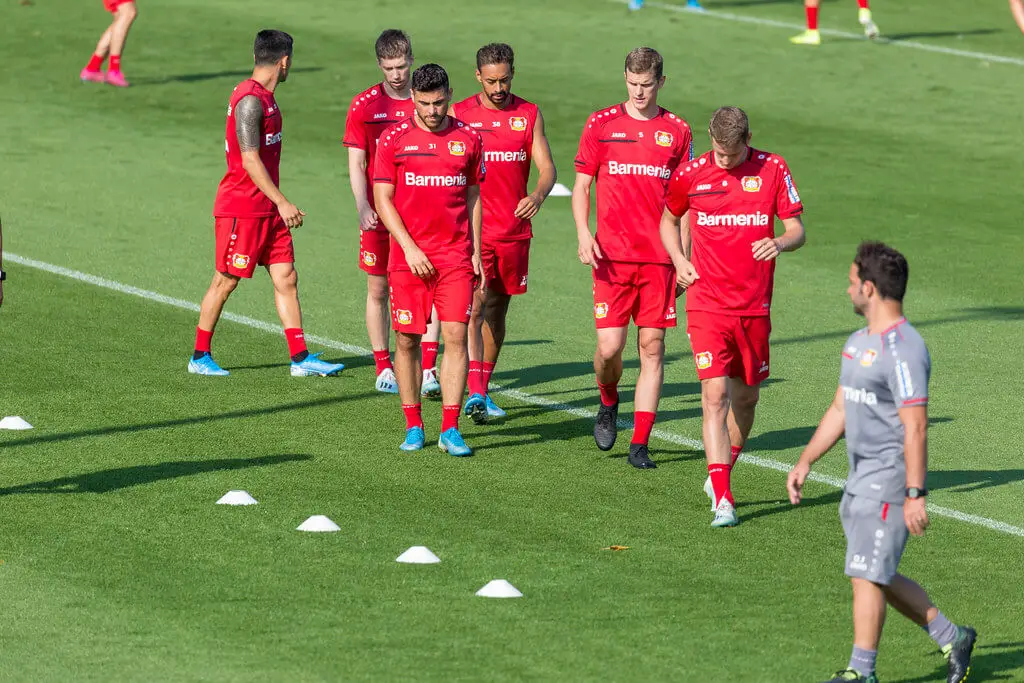Soccer is a sport that requires a lot of running and high-intensity activity, which can lead to fatigue and decreased performance if players are not properly managing their breathing.
One way to improve your performance on the field is by incorporating breathing exercises into your training routine.
In this article, you will learn everything there is to know about breathing exercises for soccer players.
Let’s get started.
Navigation
- Breathing Exercises For Soccer Players
- Understanding the Breathing Patterns of Different Soccer Positions
- The use of Breathing Exercises to Manage Stress and Anxiety in Soccer Players
- The Integration of Breathing Exercises With other Forms of Physical Training
- The Role of Breathing Exercises in Recovery After an Injury
- Final Word
Breathing Exercises For Soccer Players
Three types of breathing exercises can be beneficial for soccer players: The “box breathing” technique, the “4-7-8” technique, and the proper breathing technique.
Let’s explain them in more detail.
1. Box Breathing Technique
The “box breathing” technique is the most popular.
To do this, inhale for a count of four, hold your breath for a count of four, exhale for a count of four, and hold again for a count of four.
Repeat this process for several minutes to help calm your body and clear your mind before a game or practice.
This technique is very simple, but it works.
2. “4-7-8” Breathing Technique
Another breathing exercise that can be helpful for soccer players is the “4-7-8” technique.
But what is the 4-7-8 breathing technique?
This involves inhaling for a count of four, holding the breath for a count of seven, and exhaling for a count of eight.
This technique can help to increase the amount of oxygen that your body receives, which can lead to improved endurance and performance on the field.
3. Proper Breathing Technique
In addition to these specific breathing exercises, it’s also important for you to focus on proper breathing techniques during games and practices.
This means taking deep breaths and exhaling fully, rather than shallow breathing or holding your breath.
It is also important to perform these exercises before and after the game so that your body can perform at its best during the game.
==>>You can also read my article about mental preparation for soccer Want to take your mental game to the next level? Check out our e-book, “Mental Training Techniques for Soccer Players“. Whether you’re a beginner or a seasoned player, this e-book will provide you with the tools you need to improve your mental game and become a better soccer player.
Understanding the Breathing Patterns of Different Soccer Positions
Understanding the breathing patterns of different soccer positions is an important aspect of incorporating breathing exercises into a training routine.
Different positions on the field, such as forwards and defenders, require different levels of running and intense activity, which can affect the way players breathe.
For example, forwards may need to focus more on deep breathing to maintain endurance during long runs, while defenders may need to focus on quick, shallow breaths to help with sudden bursts of energy during defensive plays.
By understanding the specific breathing needs of different positions, coaches and players can tailor breathing exercises to best suit the needs of each player.
This can help to improve performance and reduce the risk of injury.
The use of Breathing Exercises to Manage Stress and Anxiety in Soccer Players
Managing stress and anxiety is an important aspect of any sport, including soccer.
The pressure to perform well and the physical demands of the game can take a toll on a player’s mental state.
Incorporating breathing exercises into a training routine can help you to manage stress and anxiety by providing a simple yet effective tool to calm the mind and body.
For example, the “box breathing” technique and the “4-7-8” technique can be used to help you to focus your mind and center your thoughts, which can help to reduce feelings of anxiety before a game or practice.
Additionally, deep breathing exercises can help to activate the body’s relaxation response, which can help to reduce feelings of stress and tension.
By using breathing exercises to manage stress and anxiety, soccer players can perform at their best on the field.
The Integration of Breathing Exercises With other Forms of Physical Training
Integrating breathing exercises with other forms of physical training can help to maximize the benefits of both types of exercise.
For example, incorporating breathing exercises into a warm-up routine can help to prepare the body for the physical demands of soccer training and games.
This can help to increase oxygen flow to the muscles, which can help to reduce fatigue and improve performance.
Additionally, incorporating breathing exercises into a cool-down routine can help to reduce muscle soreness and promote recovery after a workout.
By integrating breathing exercises with other forms of physical training, you can see an overall improvement in your performance and reduce the risk of injury.
Furthermore, it can also help to improve the respiratory and cardiovascular systems and can help to increase the overall efficiency of the body.
The Role of Breathing Exercises in Recovery After an Injury
Recovery after an injury is a critical aspect of any athlete’s training, and soccer players are no exception.
Incorporating breathing exercises into a recovery routine can help to speed up the healing process and reduce the risk of re-injury.
For instance, deep breathing exercises can help to increase oxygen flow to the injured area, which can help to reduce inflammation and promote healing.
Additionally, breathing exercises that focus on relaxation can help to reduce muscle tension and pain, which can help to improve range of motion and flexibility.
By using breathing exercises as a tool to aid in recovery, soccer players can get back on the field faster and perform at their best.
Furthermore, it can also help to reduce stress and anxiety that often comes with injury and rehabilitation, which can have a positive impact on overall mental well-being. Want to take your mental game to the next level? Check out our e-book, “Mental Training Techniques for Soccer Players“. Whether you’re a beginner or a seasoned player, this e-book will provide you with the tools you need to improve your mental game and become a better soccer player.
Final Word
Incorporating breathing exercises into your soccer training routine can help to improve your performance on the field and give you a mental edge over your opponents.
These exercises can help to increase your lung capacity, improve your endurance, and reduce fatigue, all of which can help to give you a competitive edge.
So, take a few minutes each day to practice these exercises and you may see a significant improvement in your game.

